Last Updated on by Mitch Rezman
The question “How are African Grey Parrots to keep as pets?” came from Quora
“Come on, fess up!
You’ve done the unthinkable. You’ve actually thought of getting an African Grey but the horror stories of screaming, biting and plucking keep you “centered” or “sane”.
What if you had a mentor?
That’s why you have me!
I love Quora. I love to argue. I love setting the record straight.
The single most important lesson I learned in outside commission sales over 20 years was, God gives you one mouth and two ears that should be used in the same proportion.
Regarding that first answer on Quora, Don’t you find it unnerving to hear some one dictate the actions you should take based upon a question asked of you, without knowing your life’s skill set?
Him: “Do you have an avian vet? No”
Me: I didn’t have an avian vet – until – I knew I was certain to be getting a bird.
Board certified Avian vets are hard to find. According to the American Veterinary Medical Foundation there were only 114 in the US in 2016.
Which begs the question do you really need a board-certified avian veterinarian? To be a board-certified avian veterinarian you must know about almost every species of bird on the planet which is about 10,000.
You need to know about chickens, seagulls, raptors and so forth. A veterinarian that specializes in exotics can be very well equipped to care for a mere several hundred species of hook bills, wax bills, horn bills and soft bills.
Our veterinarian Dr Byron DeLa Navarre Is not a board-certified avian veterinarian but he does travel around the globe teaching other veterinarians the latest exotic trends and surgical techniques on species like geckos and snakes. He’s a pretty bright guy and I trust him explicitly with our birds.
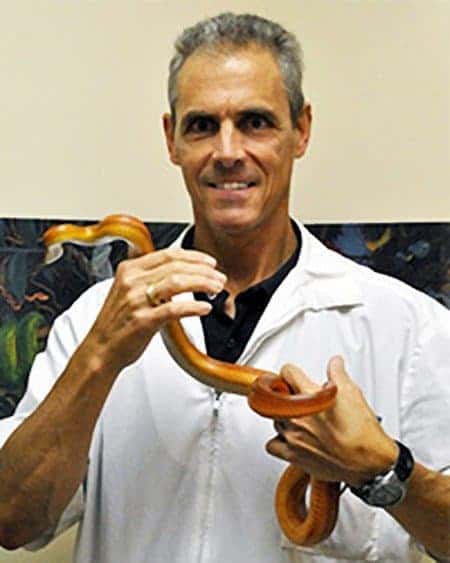
Editors note. You would think human doctors have it easy dealing with only one species and not having to guess about their sex.
At Windy City parrot we are very sensitive to knowing your bird’s species. Telling me you have an African Grey is only half the information I require.
Congo Grey Parrots vary in weight between 400-650 grams depending on the diet of individual birds. Timneh Greys vary in weight between 275-400 grams.
Thus some Congo Greys can be almost twice the size of some some Timneh greys.
Timneh African Grey parrots have deeper shades of dark charcoal feathers – gray color on their wings and back while sporting maroon tails.
Congo Greys have a red tail and possibly even more red throughout its feather system. The red factor (video above) stretches things a bit don’t you think?
When I interact with “Grey” companions they are more often than not caught off guard when I ask them “what kind of African Grey”? They usually have to stop and think about the fact that there is more than one species of grey parrots.
To put things in a more granular perspective, an Alexandrine parakeet can weigh almost as much as a Timneh African Grey. The patagonus sub species of Pategonian conure weighs 315-390g making it almost the size of a small Congo Grey. Yes that’s right, a conure the size of a grey.
Once we know the sub species of your grey parrot we can more accurately talk about nutrition, bird toys, cage accessories and bird cages.
Depending upon the size of said grey parrot, you have two stories to tell about the maintenance of these two distinct grey subspecies.
Let’s start out by talking about Timneh Greys. In that birds are flock animals, they enjoy a social setting.
We advocate putting a new bird regardless of history, in the most active area of the home so that they can enjoy human interactions and participate with their human flock as much as possible (this holds true for any new bird).
Even if the bird came from an abusive home or poor environment (basement/garage) let him or her see that interactions with other flock mates is a positive experience and nothing to be afraid of.
Contrary to popular belief I feel that it is wrong to let a bird quietly settle into his surroundings. Isolation will only make the bird more skeptical and skittish.
I shot the video below after getting peaches our Senegal. I put her on multiple stands and in a few birdcages including a travel cage and took her to work. It keeps a bird off balance but keeps her interest up while looking to you for stability.
Fast forward nine months later and Peaches has settled in quite nicely both at home, weekend home and work in a small part to the constant interaction between the two of us and others in the household as well as customers who come into our bird supply store.
Cages can be purchased new, or used on Craigslist for pennies on the dollar) and you can buy lots of expensive toys or make your own. We give you some ideas here in with a couple of videos below.
As far as FaceTime I think as long as you’re in the room with the bird and the bird knows you’re there, you’re golden. I don’t know a bird or human who really wants six hours of FaceTime with someone else.
Personally, and please take no offense to this (my readers) but at some point during the evening I need to shut down and not talk to any of you.
The noise of the several hundred thousand people we interact with on social media and email and on the website can be deafening throughout the day.
So I like to binge-watch Netflix and Amazon or read from my Kindle Fire. Getting back to the point, I used my good friend Kim for a brilliant example of a new Timneh African Grey pet bird keeper. I spoke about her in another recent post about the pros and cons of having a pet bird.
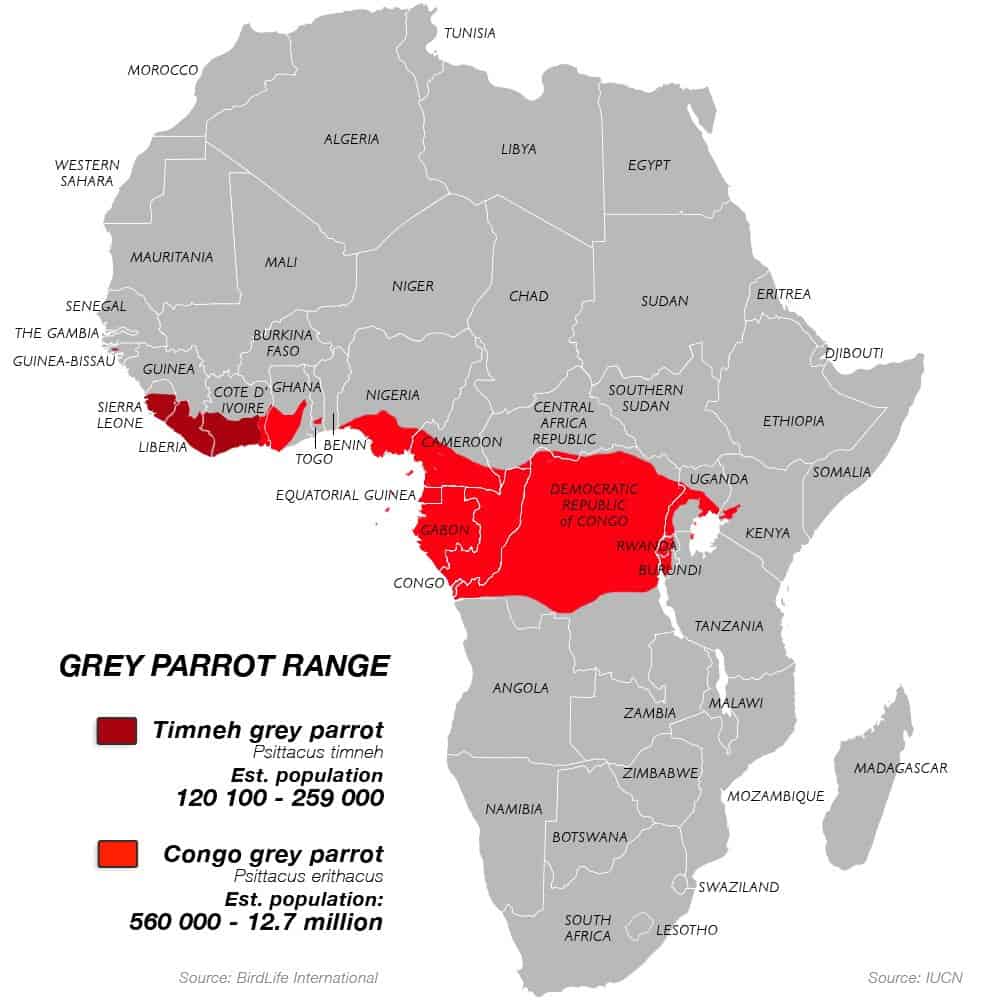
It is said that having a pet bird is the equivalent of having a two or three-year-old autistic child in a feather suit who speaks another language which could be quite trying.
Kim has been running a daycare for 25 years dealing with two and three-year-olds en masse. Her words to me were “who better to care for an African Grey parrot”?
I recently wrote Kim with a quote from Mark Twain that really explains her:
“She was not quite what you would call refined.
She was not quite what you would call unrefined
She was the kind of person that keeps a parrot.”
Yes, digression is my middle name 🙂
Point is wouldn’t a mother who spent 5 or 10 or 20 years raising children be an ideal candidate for keeping a parrot? Or did I miss the memo that children are no longer noisy, messy and require socialization?
The world is about supply and demand. Worry less about the origin of the bird and more about the care of the bird. Think about how you tortured your mother for all those years. A bird just might be a cake walk for anyone with parenting skills to draw from.
We strongly encourage adoption. We work with local rescues here in the Chicago area. Unfortunately there is not always a bird rescue near you with a particular species of bird that you are seeking.
sorry about the dubbing but this was the best vid (so far)
illustrating the differences between the two African grey sub species
There’s also the universe is too complicated to be arbitrary method of bird acquisition:
- We pulled Popcorn from a bush after a call from a woman two blocks away from the Birdie Boutique.
- Bacon was found in a tree across from the shop.
- When we decided to get our next big bird, I casually mentioned a Senegal would be really cool. Three weeks later one showed up at my door delivered by a rescue volunteer (who has known us for many years). Peaches is 111 g, the term big bird is relative.
“hmmmmm”
As one reader pointed out, “it’s not the fault of breeders which everyone likes to blast”. If there wasn’t a demand then there wouldn’t be any breeders.
Saying breeders should be banned is like saying porn is disgusting, evil and should be censored – and everyone agrees, yet Pornhub is the 38th most visited website on the Internet. Visited more than WordPress.com (41st), MSN.com (42nd) and Microsoft.com (48th).
Once you’ve made the decision to acquire a bird be it an African Grey or any parrot for that matter it’s time to seek out an avian veterinarian. You want to interview him or her getting insights on their current avian patient base. Their views on the use of Lupron to treat bird hormonal issues? How they feel about light affecting circadian rhythms?
Veterinarians are also a good source for “sourcing” your future pet bird (or cat or dog or gerbil). They know where the good and bad birds come from. They have insights into people looking to re-home animals.
Editors note: There is only ONE species of dog.
Don’t look at your (potential) veterinarian as simply a source of veterinary advice and care.
If they can’t help you holistically with regards to nutrition, housing, foraging and enrichment, perhaps they are not suited to be your bird’s veterinarian.
Veterinarians can also be a great source for finding your next pet. They know the patients and the breeders. If you’re looking for a bird and you can’t find it at a rescue, or don’t have a bird rescue reasonably close, start your pet bird (or any pet) search with local veterinarians.
Editors note: If you live in a rural area with no access to a veterinarian competent in avian species, a bird may not be your best choice of pet.
There are always the problems of medical emergencies, questions of day-to-day nutrition and housing. You are going to need a go-to veterinary authority, especially with animals that live for decades..
We can help you out with just about all of your bird’s environmental needs inside and outside the bird cage. We can’t and won’t answer veterinary-related questions because we’re not qualified.
Think about it in terms of having a team – veterinary – environmental – day-to-day caregiving as necessary to maintain the equilibrium of an animal that’s been evolving for 99 million years – literally.
Circling back to the original question, we never really touched on Congo African Greys. Our simple advice is bigger bird bigger brain. Congos are going to be somewhat more demanding, louder and a bit more complex than Timneh African Greys.
Bird toys need to be bigger for Congo’s Greys over Timneh Greys. The size of the food has to be offered accordingly. Cage size might be based upon the bird’s wingspan and/or lifestyle.
Other than that we’re back to having a three-year-old autistic child in a feather suit that’s entire lot in life is to make a mess. Birds were put on the earth to spread seeds across the land. Unfortunately they don’t understand the difference between the waterholes on the Serengeti Plains of Africa, the ground under the rain forest canopy and your new Pergo floor.
They don’t know the difference between a $200 play stand and a $5000 armoire, both offer wood to chew. It’s all something to be tongue tested and tasted. It’s up to you the captive bird keeper to guide the bird towards right decisions. Place in front of them the right things to eat, chew and land upon (should you choose to keep them flighted), much like teaching a child who doesn’t know what hot is until they burn themselves.
Thus keeping a Timneh or Congo African Grey, an Eclectus parrot, an Indian Ringneck, a Caique or a Sun Conure will always have its nuances but will have a similarity of experience that one must be prepared for in order to keep any kind of parrot is a pet.
Something to ponder:
It takes African Greys longer to mature than many other species. Young African Grays may be part of the family group for many years before entering the flock as a flock member seeking a mate.
And this is where it gets really interesting:
This would explain the African Grey parrot re-bonding with another human in the household out of the blue.
Remember – there’s 99 million years of DNA at work here, literally.
So maybe, just maybe, African Greys are not being irrational but are moving away from whoever brought them up first (mom/dad) in their search for a mate to grow old with.
In the bird’s mind, instinctually this helps prevent inbreeding and keeps the gene pool strong and deep.
In other words, the initial caregiver human is seen as a parent while the next human to bond with, is a flock mate.
Written by Mitch Rezman
Approved by Catherine Tobsing
Author Profile
Latest entries
 Bird BehaviorJune 26, 2025How is it Parrots Are Problem Solvers Social Animals and Even Use Tools?
Bird BehaviorJune 26, 2025How is it Parrots Are Problem Solvers Social Animals and Even Use Tools? Bird & Parrot AnatomyJune 25, 2025How a Tiny Chemical Modification Makes Parrots Nature’s Living Paintings
Bird & Parrot AnatomyJune 25, 2025How a Tiny Chemical Modification Makes Parrots Nature’s Living Paintings PigeonsJune 20, 2025How Do Parrots Thrive in Cities Outside Their Native Habitats?
PigeonsJune 20, 2025How Do Parrots Thrive in Cities Outside Their Native Habitats?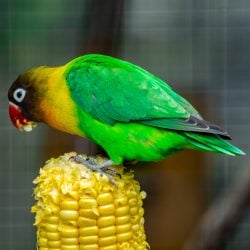 Feeding Exotic BirdsJune 20, 2025Is Corn On the Cob Safe for Pet Birds?
Feeding Exotic BirdsJune 20, 2025Is Corn On the Cob Safe for Pet Birds?
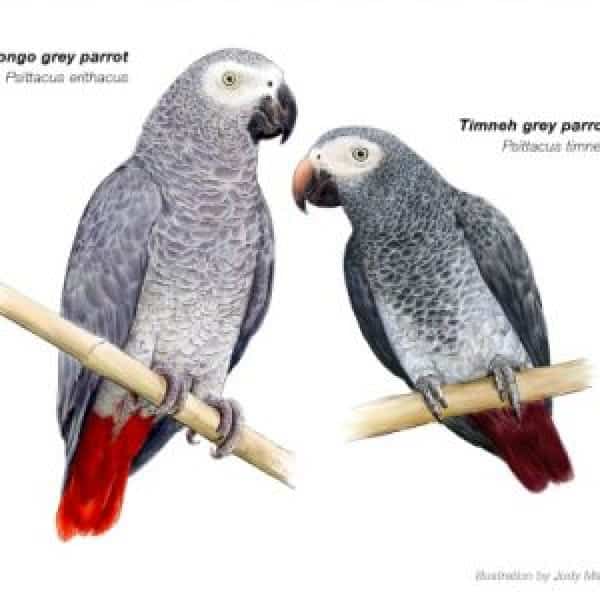

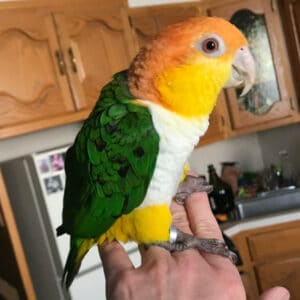


Sherry Langevin
21 Jul 2017Arlo has lived with me for 26 years, since she was a ‘baby’. Took a long time for me to realize, that yassss, my bird is also not a ‘snuggly’ bird…..she loves attention, singing, scratching her head/beak/neck pinfeathers. She loves playing those birdgames (peek aboo, etc) she loves singing and dancing. I lost her for 4 days and 3 nights once, and she came back (actually, she never left the neighbors yard, full of brush, bushes, trees, and all the other fauna that lives in Maine) She fell in love with Jim, my main squeeze. My late husband bought her for me as a Christmas present one year, and Arlo would rarely have anything to do with him, even though he tried. When Jim -I met him through online dating- came to my home the very first snowy time, it was as a favor to snowblow the 4 foot snowfall from my driveway. I knew Jim was not a creep, because as soon as he entered the doorway, Arlo began sending him kisses. Jim knew nothing about parrots at that time, and didn’t notice that the bird was enamored of him. Other people, male and female had come through that same door. She was reserved with the other guys. Wouldn’t speak or interact. So, yes, I agree that they aren’t always ‘snugglebugs’ but I think each bird and each circumstance is different. I didn’t know that about timnehs, (being really more social than congo greys). There have been no more escapes from Arlo, but each time we take a walk on the road (I use a small wire dog crate ziptied to a wheeled walker-she doesn’t like those flight suits, I wish she did) he see the crows. Many times she shouts ‘hi crows! Hi! I want to come out! Let me out! Want to see the crows!’ So, I guess her stay in the woods gave her a high opinion of crows. She never asked about them prior to her ‘amazing jouney’.
WindyCityParrot
21 Jul 2017Arlo is one lucky African grey Sherry:-)
Sherry Langevin
21 Jul 2017ohh….I have 26 years of stories of how amazing parrots are. I have stopped talking about them, because many people don’t believe me when I tell them what Arlo says or does, or intuits (whar about tever it is called). I had a canary hen, who also was pretty amazing; I wish I’d had a video cam to record the stuff she did; she socialized with Arlo. The other day, I discovered that I have an avian certified vet next town over. I’ve lived here 12 years- didnt have a clue. I also have a wonderful ‘knowledgeable’ vet who loves birds, but is not avian certified, but he is pretty aware and knows alot. I will still go where he is; but he is soon retiring, so I’m happy I found the avian vet. My point is, that I told the vet tech a bit about Arlo, and I know she has lots on her mind; but I think she didn’t understand how smart and wonderful birds are. (hey- sometimes I just think they are a pain in the ass too) Long ago, I wrote a small booklet on my computer about all the stuff she said/did. Then, it crashed, and I didn’t re write it. This might be yet another goal as I turn 60 this fall- to record stories about bird intelligence (ARlo and that sweet canary hen I wrote about) thanks for letting me ramble.
WindyCityParrot
22 Jul 2017Ramble away Sherry – we’ll publish anything you write – if you use https://www.google.com/docs/about/ everything is in the cloud accessible from any computer so you never loose another word
Sherry Langevin
22 Jul 2017I do have that; so I just go to windycityparrot on google docs?
Joy Redding
23 Jul 2017i was not overwhelmed with a red Gray, GMO is not the answer to everything, be it Dolly the sheep, or these innocent birds. I find it apalling they are allowed to do this. Someday people will have designer parrots and certain behaviours will be eliminated. We here joked that if they could make our Timneh less of a biter that might be a good thing. But, its only “natural” that she does that. Shame on the geneticists.
Go cure cancer with your knowledge.
WILLIAM ALPHONSO
22 Oct 2017We’ve had an African grey as a pet in our home, and in my point of view, it was the best pet that we ever had. The parrot could speak about 150 words and imitate my voice perfectly. Moreover, could understand a few words in the right context. One day it had a rat bite, and died a few days after. It was the saddest day in my life! These birds are truly amazing and the interaction between owner and pet cannot be understood until one keeps them as a pet. I now have a timneh african grey, which is a bit smaller in size but very active. It will be challenge to tame it as it is a wild caught bird, about 6-8 months old. Let’s see how it goes!